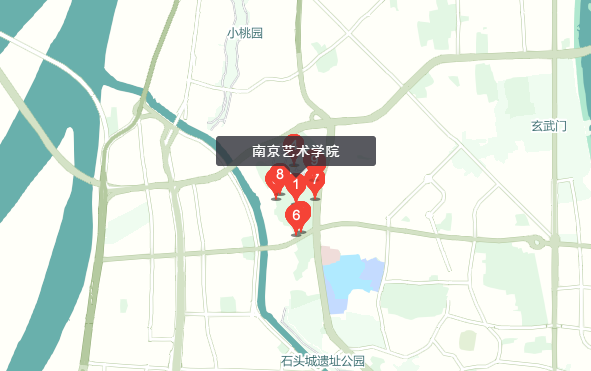To fully implement the innovation-driven development strategy, enhance the sharing and innovative utilization of regional artistic and cultural resources, and promote the deep integration of the Nanjing University of the Arts (NUA) with the local community as well as the development of a culturally vibrant region, NUA signed a strategic cooperation agreement with the People’s Government of the Gulou District in August 2022. This collaboration led to the establishment of theNUAInterdisciplinary Industry-Education Integration Center, located in Building 7, CMG Audio-Visual Valley,No.72 West Beijing Road. The center aims to harness the complementary strengths of both parties in talent, technology, academic disciplines, and industrial resources, fostering collaborative innovation and development among government, industry, academia, and research. This initiative is designed to create a pioneering model of interdisciplinary industry-education integration, characterized by the unique synergy of “Art + Technology”. With the widespread application of digital and intelligent technologies, NUA remains at the forefront of the times, aligning with evolving industrial trends. In 2024, the Interdisciplinary Industry-Education Integration Center was renamed as the Digital Intelligence Innovation and Development Center (hereinafter referred to as “the Center”). This transformation reflects a renewed focus on research and innovation, driving deeper collaboration among industry, academia, and research.
The center spans a total area of 2,066 square meters and houses four specialized research hubs: the Audio-Visual Creative Research Center, the Animation and Digital Media Research and Innovation Center, the Intelligent Product System Design Innovation and Experience Center, and the Metaverse Light and Shadow Art Research Center. Leveraging the disciplinary and talent resources of NUA, the Center actively engages with leading enterprises in cutting-edge fields such as artificial intelligence and digital technology. This collaboration not only fosters an industrial clustering effect but also aims to build a shared community for school-enterprise collaboration. By establishing communication platforms, promoting industrial partnerships, strengthening innovation-oriented cooperation, and cultivating a thriving innovation ecosystem, the Center facilitates resource sharing and complementary advantages and has contributed to accelerating the transformation and practical application of technological achievements.
Rooted in the richness of excellent traditional Chinese culture, the Center focuses on in-depth research in specialized fields, producing impactful outcomes through digital innovation. It is dedicated to the creative transformation and innovative development of China’s outstanding traditional culture, while striking a balance between preservation and innovation. The Center has organized the exhibition “Commemorating the 130th Anniversary of Mei Lanfang’s Birth: An Exhibition of Mei Lanfang’s Hand Gestures in Peking Opera Performance”, co-hosted by the Prince Kung’s Palace Museum of the Ministry of Culture and Tourism and the Mei Lanfang Memorial Museum. It has conducted intelligent algorithm analysis and research on the nationally recognized intangible cultural heritage of Nanjing gold foil forging techniques through imaging, establishing standardized action data for the forging techniques and exploring new methods and pathways for the study of craftsmanship inheritance. Additionally, it has performed intelligent algorithm analysis and research on Kunqu opera movements, creating standardized action data for Kunqu opera performance. The Center has also conducted research on robotic arm testing and produced a series of educational public service short films and commercial advertisements. In collaboration with JSCN, it established the AIGC Film and Television Content Incubation Base and launched the “Micro Light Plan: 2024 Chinese University Student Micro Drama Creation Plan”. Significant achievements have been made in projects such as the research and development of related intelligent products for Kia Motors, the subway interior design for the CRRC Nanjing Puzhen Co., Ltd., the design of Philips cleaning appliances, and the design of wearable intelligent product systems for elevator maintenance personnel.
The Center is committed to nurturing high-quality talents with an international perspective and an innovative spirit. It has meticulously organized and successfully hosted a series of international talent development programs, including the Finland KONE Elevator Design Directors’ Workshop for Young Teachers, the Polytechnic University of Milan International Workshop, the Denmark Kolding School of Design International Workshop, the Chiba University Interdisciplinary International Workshop, and the Music X Lab Master Workshop. These initiatives provide students with unparalleled opportunities to engage in in-depth exchanges with top international experts and scholars, broadening their global perspectives and enhancing their professional expertise. In addition, the Center actively fosters close collaborative relationships with government agencies, leading domestic and international enterprises, and universities. Together, these partnerships aim to explore innovative models and pathways for talent cultivation.
In the future, the Center will remain steadfast in its philosophy of “integration of art and technology, collaboration among disciplines, convergence of methodologies, and engagement with government and enterprises”. Guided by this philosophy, the Center is committed to making significant contributions to the development of a world-class comprehensive art university with Chinese characteristics in the new era and the high-quality development of the regional economy and society.
